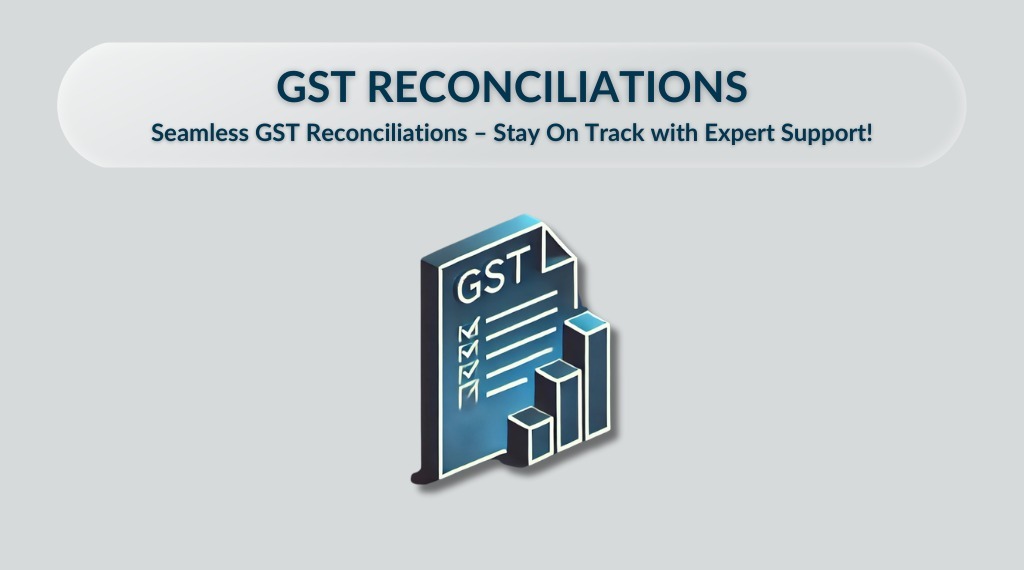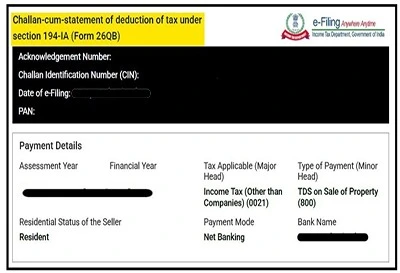
What is GST Reconciliation?
Accurately filing GST returns is not only crucial for small businesses to avoid legal trouble, penalties, and fines but also plays an important role in maintaining their financial reputation and credibility. Here, in this blog we will explain to you in detail how using a GST reconciliation software simplifies GST filing.
What Is GST Reconciliation?
GST reconciliation is a process of comparing two sets of data entries, mainly details to be submitted on GST portal with acutal sale and purchases shown in books of account to detect and correct errors.
It is generally conducted to rectify unintentional errors or omissions and ensures accurate claiming of input tax credit (ITC) for invoices issued in the previous financial year. In order to avoid discrepency in filing returns and claiming 100% ITC it is important that your GST invoicing details are in sync with your book’s purchase and sales .
Importance of GST Reconciliation
The GST Reconciliation of GST Return is important for you for a number of reasons. Let’s briefly go over them:
- ITC Claim: The most primary reason for GST reconciliation is to calim 100% accurate ITC and you can only claim accurate ITC by sorting out any differences between your purchase register and GSTR 2A.
- Avoids Duplicity: With help of GST reconciliation you can avoid duplicity at the time of filling annual GST return. To do the same you need to reconcile all your monthly or quaterly GST return.
- Identifying Problems: In order to make the necessary adjustments and submit an error-free GST Return, GST reconciliation assists in identifying problems with the invoices produced by your supplier.
- Prevention From Notices and Penalties: Mismatches in your bills can cause you to throw your case into question and risk having to pay fines and reply to notices.
How Taxinno GST Software Helps in GST Reconciliation?
GST reconciliation software provides various benefits to businesses by streamlining the reconciliation process such as:
- Automation: It Automates the reconciliation procedure, diminishing the requirement for manual intervention and reducing errors to a minimum.
- Effective Analysis: Effectively compares extensive datasets, expediting the reconciliation process and enhancing its accuracy.
- Real-Time Data: Provides real-time data, ensuring that businesses work with up-to-date information.
- Easy-to-Use: The majority of GST reconciliation software provides an intuitive user interface, enabling users to navigate effortlessly and conduct reconciliations with ease.
- Minimize Errors: By validating data entries, the software minimizes the chances of errors, guaranteeing a higher level of accuracy.
- Matches Invoices: It automatically matches invoices, purchase records, and other transactions, simplifying the process. By minimizing errors and ensuring compliance, the software helps businesses avoid penalties and scrutiny notices.
- Notification Alert: The software sends timely notifications and alerts to identify discrepancies, empowering businesses to promptly address any issues that arise.
- Audit Trail: Many reconciliation software solutions offer an audit trail, allowing users to track changes and maintain data integrity.
- Reports: It generates detailed reports and provides analytics to help businesses gain insights into their GST compliance.
Taxinno GST software has AI powered GST reconciliation features that enables businesses to reconcile all the GST return in details with pin point accuracy. The user-friendly interface and advanced features of Taxinno simplify reconciliation of bulk invoices and purchase records.
Which Data should be Reconciled Under GST?
Under GST, businesses should reconcile various sets of data to ensure accurate reporting and compliance. The data that should be reconciled includes:
| Data to be Reconciled | Purpose |
|---|---|
| Purchase Register and GSTR-2A | Verify the accuracy of inward supplies as declared by suppliers |
| Sales Register and GSTR-1 | Confirm the accuracy of outward supplies reported by your business |
| GSTR-3B and GSTR-1 | Match tax liability and ITC details for accurate tax reporting |
| GSTR-2B and GSTR-3B | Ensure correct utilization of Input Tax Credit based on auto-drafted data |
| Input Tax Credit (ITC) | Match claimed ITC in GSTR-3B with available ITC in GSTR-2A or GSTR-2B |
| E-way Bills and Invoices | Cross-verify data to reconcile taxable amounts and identify discrepancies |
| Annual Returns and Monthly/Quarterly Returns | Confirm consistency in data reported throughout the financial year |
| Supplier-wise GST Reconciliation | Reconcile data for each supplier separately to ensure accurate ITC claims |
Reasons Why GST Reconciliation is a Pain For Small Business
For small business enterprises, managing invoices and purchases in bulk can be a difficult task
- Bulk Invoices: Small business enterprises face challenges in managing bulk invoices and purchase records, making GST reconciliation daunting.
- Time Consuming: Small businesses often generate bills in bulk, which can make the process of reconciliation highly challenging and time-consuming.
- Technical Experties: GST reconciliation demands technical expertise, which may pose challenges for small business enterprises lacking such specialized skills.
- Minor Mismatches: Even minor discrepancies, such as typographical errors or mismatched details, can lead to issues during the reconciliation process. These are generally not visible to human eye and mostly shown and mismatch by Excel formulas.
Things to Check while Matching GST Returns
There are several consequences a business has to face if their GST returns are mismatched such as:
- Unreflected GST Credits –The seller has disclosed a responsibility, but the GST returns do not reflect a credit: Such credits must be used by the earliest of the monthly return deadline or the annual return deadline.
- Unverified GST Credits- Businesses have claimed credit on certain purchases in their GST returns even when the vendor has not admitted obligation for the supply made: Businesses should check in with the seller again to be sure the liability has been disclosed. Otherwise, there may be a chance of these credits being rejected.
- Resolving Liability-Credit Mismatch in GST- Identify and reconcile mismatches between vendor liability and claimed credit, using methods like issuing debit/credit notes. Do this before filing the monthly return or the relevant annual return.
How is GST Reconciled Manually?
Manually reconciling GST involves comparing and matching various records to ensure accurate reporting and claiming of input tax credit. Here are the steps to reconcile GST manually:
- Step 1- Collect Invoices and Purchase Records
- Step 2- Prepare GSTR-3B and GSTR-1 Reports
- Step 3- Compare the sales data from GSTR-1 with the purchase data from invoices to verify if they align.
- Step 4- Check ITC Eligibility
- Step-5- Cross-check the GSTIN of suppliers and recipients in the invoices and reports for accuracy.
- Step-6- Compare the ITC available as per GSTR-2A or GSTR-2B with the ITC claimed in GSTR-3B.
- Step-7- Investigate and rectify any mismatches between the reported data, including differences in tax amounts, invoice numbers, or dates.
- Step-8- Make necessary adjustments in the books of accounts to align with the reconciled data.
- Step-9- If discrepancies are found during reconciliation, file corrected returns (amendments) to ensure accurate reporting and claiming of ITC.
- Step-10-Repeat the reconciliation process for each tax period to maintain accurate and up-to-date records.
Drawbacks Manual GST Reconciliation Using GST
Manual GST reconciliation using Excel can be a tedious and error-prone process, leading to several drawbacks:
- Limited Automation: Excel lacks automation capabilities, making it challenging to streamline the reconciliation process and perform repetitive tasks efficiently.
- Lack of Real-Time Data: Excel files might not always reflect real-time data, leading to outdated information.
- Difficulty in Handling Complex Data: Reconciling intricate data sets manually in Excel can be complex and error-prone.
- Risk of Formula Errors: Formulas in Excel spreadsheets can be susceptible to errors, especially when dealing with a large number of cells.
- Difficulty in Handling Large Datasets: Excel may struggle to handle and process large datasets efficiently, resulting in performance issues.
- Minor Mismatches: Minor rounding-off differences and other small differences are also shown as discrepancies.
- Lack of Audit Trail: Excel lacks a comprehensive audit trail, making it challenging to trace the history of changes and modifications.
Conclusion
GST reconciliation is crucial for businesses to ensure continuous compliance and avoid potential issues with GST authorities. By conducting regular and accurate reconciliations, enterprises can claim Input Tax Credit (ITC), which holds particular significance for small businesses with limited capital and fluctuating growth patterns. Properly managing GST reconciliations not only helps avail the eligible credits but also strengthens the financial stability of businesses, allowing them to operate smoothly and per the GST regulations.
FAQs About GST Reconciliation
Q1. What is the purpose of GST reconciliation?
The purpose of GST reconciliation is to rectify any mismatches, errors or wrong entries between the taxpayer’s GST invoices and books of returns. It is done to match the difference between sales and purchases and various returns.
Q2. How does GST reconciliation software work?
The GST reconciliation software functions as a backbone for the business and provides the user with a complete GST reconciliation experience.
Q3. What are the benefits of using GST reconciliation software?
The benefits of using GST reconciliation software is that it automates the function of making reconciliations of mismatched invoices and empowers business to avoid any penalties, fines, and legal troubles.
Q4. Is GST reconciliation software suitable for all types of businesses?
Yes, GST reconciliation software is a versatile solution that is well-suited for businesses of all sizes and industries, providing comprehensive support for their GST reconciliation needs.




